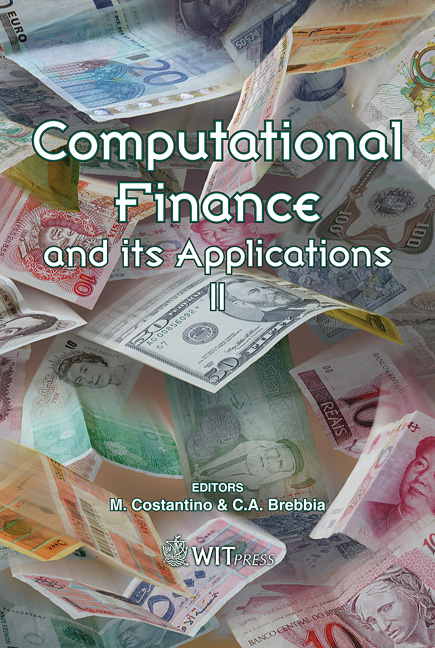Exotic Option, Stochastic Volatility And Incentive Scheme
Price
Free (open access)
Transaction
Volume
43
Pages
10
Published
2006
Size
489 kb
Paper DOI
10.2495/CF060181
Copyright
WIT Press
Author(s)
J. Tang & S. S.-T. Yau
Abstract
This paper examines the impact of incentive fee on exotic option pricing when the volatility is a stochastic process and is correlated with the underlying asset price. Since high water mark (HWM) is the benchmark employed by incentive schemes in the hedge fund industry, we first develop the HWM lookback optionpricing framework in stochastic volatility model. This provides an improvement to previous works in constant volatility model. We also explore option prices through Monte Carlo (MC) simulation and variance reduction technique. We further demonstrate that our discrete simulation to HWM option pricing is more practical than models assuming continuous collection of incentive fees. Numerical examples illustrate how the stochastic volatility models and incentive scheme influence option pricing. Keywords: lookback option, stochastic volatility models, high water mark, risk neutral, Monte Carlo simulation, variance reduction. 1 Introduction Over the last few years, hedge funds have been experiencing significant growth in both the number of hedge funds and the amount of assets under management. Based on the estimates by Securities and Exchange Commission, there are currently around 8,000 hedge funds in the United States managing around $1 trillion in assets. Hedge fund assets are growing faster than mutual fund assets and have roughly one quarter of the assets of mutual funds. They often provide markets and investors with substantial benefits, such as enhancing liquidity, contributing to market efficiency by taking speculative and value-driven trading
Keywords
lookback option, stochastic volatility models, high water mark, risk neutral, Monte Carlo simulation, variance reduction.





